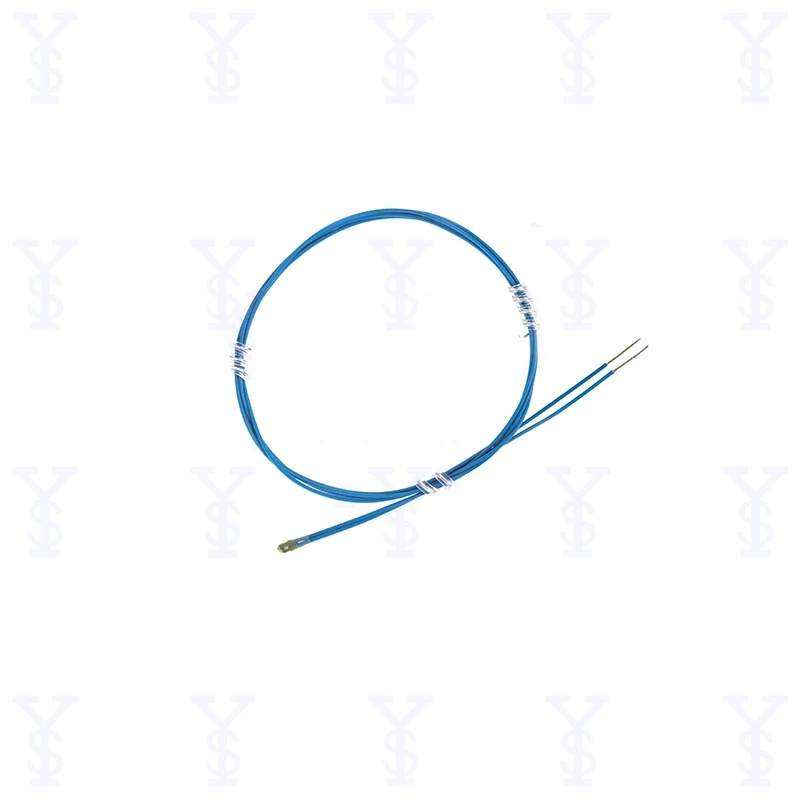Fout in e-mailformaat
emailCannotEmpty
emailDoesExist
pwdLetterLimtTip
inconsistentPwd
pwdLetterLimtTip
inconsistentPwd


Understanding Industrial Temperature Sensors: Types and Applications
Temperature control is a critical aspect of various industrial processes. From manufacturing to food processing, maintaining the right temperature ensures product quality, safety, and efficiency. This is where temperature sensors come into play. In this blog, we will explore the various tipos de sensores de temperatura industriales (types of industrial temperature sensors), their applications, and how they work.
What Are Industrial Temperature Sensors?
Industrial temperature sensors are devices designed to measure temperature in industrial environments. These sensors are crucial for monitoring processes, ensuring safety, and maintaining product quality. They convert thermal energy into a readable output, usually in the form of an electrical signal that can be interpreted by control systems.
Importance of Temperature Measurement
Accurate temperature measurement is vital in several industries:
Manufacturing: In production lines, temperature control can affect product quality. For example, in metal fabrication, precise temperature measurement is necessary to achieve the desired properties of metals.
Food and Beverage: Temperature plays a crucial role in food safety. Maintaining proper temperatures during processing and storage helps prevent spoilage and ensures compliance with health regulations.
Pharmaceuticals: Many drugs must be stored at specific temperatures to maintain their efficacy. Temperature sensors help ensure that these conditions are met.
HVAC Systems: In heating, ventilation, and air conditioning (HVAC) systems, temperature sensors help regulate indoor climates, ensuring comfort and energy efficiency.
Chemical Processing: In chemical manufacturing, temperature can greatly influence reaction rates and product quality. Accurate monitoring is essential for safety and efficiency.
Types of Industrial Temperature Sensors
Understanding the various tipos de sensores de temperatura industriales is essential for selecting the right sensor for your application. Here are some of the most common types:
1. Thermocouples
Thermocouples are one of the most widely used temperature sensors in industrial applications. They consist of two dissimilar metals joined at one end, forming a junction. When the junction is heated or cooled, it produces a small voltage that is proportional to the temperature difference between the junction and the other ends of the wires.
Advantages:
- Wide temperature range (-200°C to 1,700°C or -328°F to 3,092°F).
- Fast response time.
- Durable and can withstand harsh environments.
Disadvantages:
- Requires calibration.
- Non-linear output.
Applications:
- Metal processing.
- Furnace temperature measurement.
- Power generation.
2. Resistance Temperature Detectors (RTDs)
RTDs use the principle that the resistance of certain metals changes with temperature. Typically made of platinum, RTDs provide accurate and stable measurements. They consist of a coil of wire wrapped around a ceramic or glass core.
Advantages:
- High accuracy and stability.
- Wide temperature range (-200°C to 850°C or -328°F to 1,562°F).
- Excellent linearity.
Disadvantages:
- More expensive than thermocouples.
- Slower response time.
Applications:
- HVAC systems.
- Food processing.
- Chemical industries.
3. Thermistors
Thermistors are temperature-sensitive resistors. They are made of ceramic materials and exhibit a significant change in resistance with a change in temperature. Thermistors can be either NTC (Negative Temperature Coefficient) or PTC (Positive Temperature Coefficient).
Advantages:
- Highly sensitive.
- Small size, allowing for compact installations.
- Cost-effective.
Disadvantages:
- Limited temperature range (typically -55°C to 125°C or -67°F to 257°F).
- Non-linear output.
Applications:
- Medical devices.
- Automotive applications.
- Consumer electronics.
4. Infrared Temperature Sensors
Infrared sensors measure temperature from a distance by detecting the infrared radiation emitted by an object. They are particularly useful for measuring temperatures of moving objects or hazardous materials.
Advantages:
- Non-contact measurement.
- Fast response time.
- Suitable for high-temperature applications.
Disadvantages:
- Affected by dust, smoke, and humidity.
- Requires line of sight to the object.
Applications:
- Electrical and mechanical equipment.
- Food processing.
- HVAC systems.
5. Bimetallic Temperature Sensors
Bimetallic sensors use two different metals that expand at different rates. As temperature changes, the metals bend, and this bending movement is converted into a temperature reading. Bimetallic temperature gauges are often seen in mechanical temperature measuring devices.
Advantages:
- Simple design.
- Robust and durable.
- No external power source required.
Disadvantages:
- Limited accuracy compared to other sensors.
- Slower response time.
Applications:
- HVAC systems.
- Heating applications.
- General temperature monitoring.

Choosing the Right Temperature Sensor
When selecting a temperature sensor for industrial applications, several factors must be considered:
Temperature Range: Ensure that the sensor can operate within the required temperature range for your application.
Accuracy: Consider the level of precision needed. RTDs are generally more accurate than thermocouples.
Response Time: Depending on your process, you may need a sensor with a quick response time, such as thermocouples or infrared sensors.
Environmental Conditions: Consider factors like humidity, dust, and potential exposure to chemicals, as these can affect sensor performance.
Cost: Budget constraints can influence your choice. Thermistors are generally more affordable, while RTDs offer high accuracy at a higher cost.
Installation Space: Some sensors, like thermocouples, can be quite compact, while others may require more space for installation.
Applications of Temperature Sensors
1. Manufacturing and Process Control
In manufacturing, maintaining the right temperature is essential for product quality. For instance, in the metal industry, temperature sensors are used to monitor and control the temperature during forging, casting, and heat treatment processes.
2. Food and Beverage Industry
Temperature sensors play a vital role in ensuring food safety. They are used to monitor cooking temperatures, refrigeration, and pasteurization processes to prevent foodborne illnesses.
3. HVAC Systems
In HVAC applications, temperature sensors help regulate indoor temperatures and improve energy efficiency. They are used in thermostats and can also monitor the temperature of air, water, and refrigerants.
4. Chemical Processing
Temperature sensors are crucial in chemical processing, where temperature can affect reaction rates and product quality. They help maintain optimal conditions in reactors, mixers, and storage tanks.
5. Automotive Industry
Temperature sensors are widely used in vehicles to monitor engine temperatures, cabin temperatures, and even battery temperatures in electric vehicles. This data helps ensure optimal performance and safety.
Conclusion
Understanding the various tipos de sensores de temperatura industriales is essential for selecting the right sensor for your specific application. Whether it's a thermocouple, RTD, thermistor, infrared sensor, or bimetallic sensor, each type has its unique advantages and is suited for particular applications.
Accurate temperature measurement is crucial for safety, efficiency, and quality across industries. As technology advances, temperature sensors continue to evolve, offering even greater accuracy and reliability. Investing in the right temperature sensor can make a significant difference in your processes, ultimately leading to improved product quality and operational efficiency.
In conclusion, whether you are in manufacturing, food processing, pharmaceuticals, or any other industry requiring temperature monitoring, understanding the types of industrial temperature sensors and their applications will enable you to make informed decisions. By selecting the right temperature sensor, you can ensure that your processes run smoothly, safely, and efficiently.

